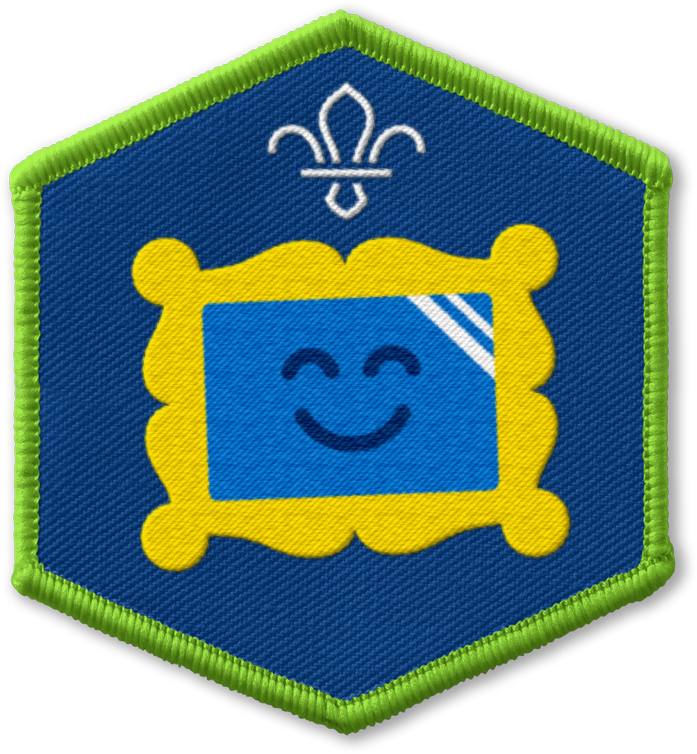Sharing is caring
You’ll need
- Pens or pencils
- A4 paper
- Sticky tape
- Sticky labels
- Scissors
- Tables
- Chairs
- Donations: small soft toys, toothpaste, clothing, practical items, and more
- Cardboard boxes (such as shoe boxes)
- Packaging materials
- Items to decorate the boxes such as wrapping paper, coloured pens, or ribbon
- Big shiny blanket or material
Before you begin
- Before the meeting, ask everyone to bring in any items they’d like to donate to the care packages. If anyone doesn’t have anything to bring in, encourage them to make something such as a picture or story. Remind everyone that they can ask family and friends to donate if they want to.
- Collect some extra items to put into the care packages.
- Set up enough tables and chairs for everyone to work in small groups. Place boxes, items and decorating equipment on each of the tables.
Story time
- Everyone should sit in a circle.
- Someone should read Sharing is Caring by Jo Bronziet.
- After reading the story, everyone should take some time to reflect on it as a group. We’ve included some questions to help you reflect in the pink box below.
Kiki and Jemima lived in the same village and were the very best of friends. They loved to play together, and they also loved to learn together at the village school.
One sunny day at playtime, Kiki and Jemima were playing in the fields and smelling all of the lovely plants and flowers, when Kiki glanced down and noticed her shoelace had come undone.
‘Don’t worry,’ said Kiki. ‘I know how to tie my shoelaces now.’
Jemima looked a little sad. ‘I don’t know how to do that yet,’ she said. ‘Could you show me how, please?’
‘Of course!’ said Kiki. She made two loops in her shoelaces and tied them together to make a knot.
Jemima watched carefully. ‘That’s great!’ she said. ‘I am going to try that myself tomorrow, before school.’
The next day at school, Jemima was wearing her favourite shoes. They were tied up with tidy bows. ‘Guess what?’ Jemima said, when she saw Kiki. ‘I remembered how you tied your shoes, and I carefully tied mine this morning, all by myself. Thank you for sharing, Kiki! I’m very proud of myself.’
‘I’m always happy to help,’ Kiki said, with a big smile on her face. ‘Sharing is caring after all!’
By Jo Bronziet
Care packages
- Everyone should get into small groups. Each group should sit at a table.
- The person leading the activity should explain that each group will work together to create a care package for someone. They’ll need to decorate their box and fill it with items.
- Once everyone has finished their boxes, one person from each group should create a label that explains who the box their group made is for.
- If there are any spare boxes or items, everyone could make another care package.
Reflection
This activity encouraged everyone to take an active role in their community, think about others and help make a positive difference. During the session, everyone had the opportunity to learn about how different people need help and how a care package might help them feel good.
Sharing is Caring
- How did Kiki help Jemima?
- Why is it important to help other people?
Care packages
- How was making a care package a kind thing to do? How did it make people feel?
- How else could people help others at home, at school or nursery or at Scouts?
Safety
All activities must be safely managed. You must complete a thorough risk assessment and take appropriate steps to reduce risk. Use the safety checklist to help you plan and risk assess your activity. Always get approval for the activity, and have suitable supervision and an InTouch process.
- Scissors
Supervise young people appropriately when they’re using scissors. Store all sharp objects securely, out of the reach of young people.
- Glue and solvents
Always supervise young people appropriately when they’re using glue and solvent products. Make sure there’s plenty of ventilation. Be aware of any medical conditions that could be affected by glue or solvent use and make adjustments as needed.
You could wrap or decorate the boxes before the activity if you think people will find it too tricky.
If anyone struggles with cutting or sticking, they could work closely with someone else to help or learn from.
All Scout activities should be inclusive and accessible.
Encourage everyone to take a care package with them and deliver it to someone who needs one. People could do this with their parents or carer (if there are enough care packages for everyone to deliver one), or you could deliver them as part of a whole group visit.
A care package doesn’t have to be for someone you don’t know or someone experiencing something like homelessness. People can also make care packages for people they know. People could think about making another care package at home for someone who’s special to them. It could be a present for someone in their family or a thank you gift to their teacher, for example.
Give someone the opportunity to be a helper of the week in this activity. They could help anyone with tasks such as cutting, decorating, or writing the label.
